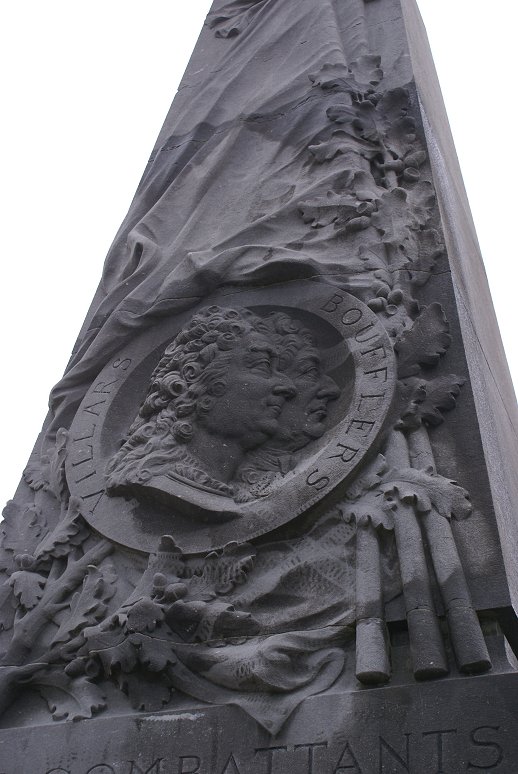Here, along slightly higher ground inside the two
mile
wide gap, Villars had built several redans - unconnected
works open at the
rear. This provided protection to the frontline defenders but
also
allowed troops, especially his cavalry, to move forward between them to
counterattack. Abatis, or felled trees and brush, were just in
front of the defenses and were roped or chained together.
Defensive
lines were also built along or inside the forests on either side of the
gap. In the Bois de Sars on the left, three defensive lines were
built in depth extending forward from the center of the line.
This created a salient called "The Triangle" that
allowed enfilade fire in the open ground of the gap itself.
On
the right side of the line, an artillery battery was hidden in lower
ground beyond Le Bleiron Farm to enfilade attackers.
Early on the morning of September 11th, Marlborough sent forward
parties of men to cut the abatis. He assembled artillery
batteries, including one of 40 guns, to bombard the French position,
especially the Triangle, and at around 7am the bombardment began.
Due to the lay of the ground, Allied cannonballs continued into
the French rear areas, doing damage to the cavalry positioned there.
Prince Eugene began the attack in the Bois de Sars. The attack
was halted at the first French line, then the Allied artillery
continued their work. Eugene's second attack took the French
first line in the forest. Marlborough sent in a reinforcing
brigade from his center, and at about 9am, Villars also sent troops
from his center. |
 |





